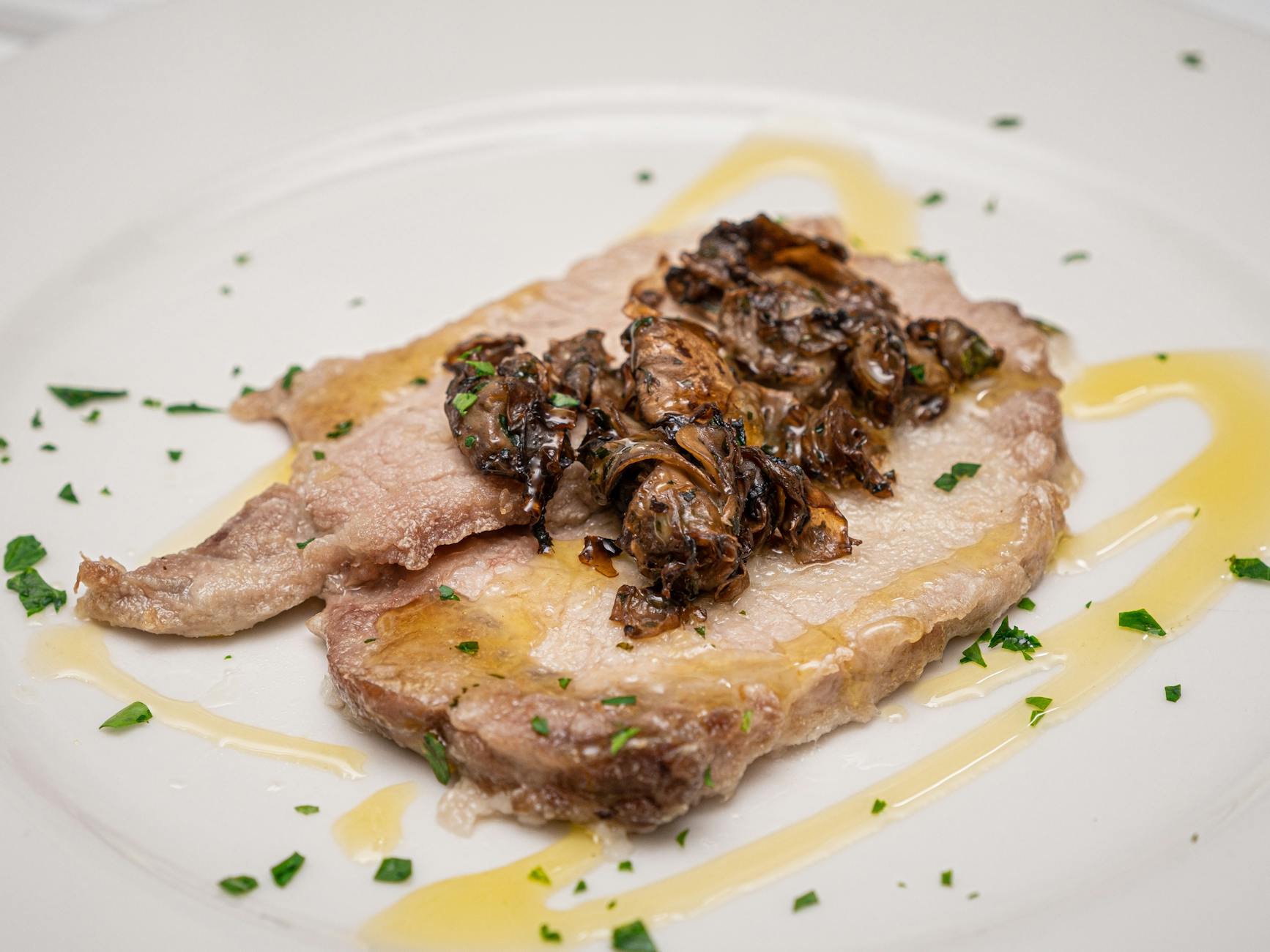Looking for a delicious and versatile meal that’s surprisingly easy to prepare? Look no further than pork tenderloin! This lean cut of meat is a fantastic canvas for a variety of flavors, making it a go-to choice for busy weeknights or elegant dinner parties. We’ll explore why pork tenderloin recipes are a great option, walk through a simple and delicious recipe, and share tips for perfecting your pork tenderloin game.
Benefits of pork tenderloin recipes
Pork tenderloin offers a multitude of benefits, making it a smart choice for home cooks. First, it’s lean! This means it’s a relatively healthy protein option compared to other cuts of pork, while still delivering satisfying flavor. You can find nutritional information on source.
Second, pork tenderloin is incredibly quick to cook. Unlike larger cuts that require hours of braising or roasting, a pork tenderloin can be on the table in under an hour. Its mild flavor also makes it incredibly versatile. It pairs well with countless seasonings, sauces, and side dishes.
Finally, pork tenderloin is often more budget-friendly than other premium cuts of meat. This allows you to enjoy a restaurant-quality meal without breaking the bank. What’s not to love?

Step-by-Step Guide / Recipe
Let’s dive into a simple yet flavorful recipe that will showcase the best of pork tenderloin. This recipe uses a simple dry rub for maximum flavor.
Ingredients:
- 1.5 lbs pork tenderloin, trimmed
- 2 tbsp olive oil
- 1 tbsp smoked paprika
- 1 tsp garlic powder
- 1 tsp onion powder
- 1/2 tsp dried thyme
- 1/2 tsp salt
- 1/4 tsp black pepper
Instructions:
- Preheat your oven to 400°F (200°C).
- In a small bowl, combine the smoked paprika, garlic powder, onion powder, thyme, salt, and pepper.
- Rub the pork tenderloin with olive oil.
- Evenly coat the pork tenderloin with the spice mixture, pressing gently to adhere.
- Place the pork tenderloin in a baking dish.
- Roast for 20-25 minutes, or until a meat thermometer inserted into the thickest part registers 145°F (63°C).
- Let the pork tenderloin rest for at least 5-10 minutes before slicing and serving. This allows the juices to redistribute, resulting in a more tender and flavorful result.
Serve with your favorite sides, such as roasted vegetables, mashed potatoes, or a fresh salad. This basic recipe can be easily adapted to your personal taste by adding different herbs, spices, or a flavorful marinade. For example, a honey-mustard glaze or a citrus marinade would be a delicious variation. Consider trying different pork tenderloin recipes to find your favorite!

Tips for Perfect pork tenderloin recipes
Achieving perfectly cooked pork tenderloin is easier than you might think! Here are a few tips to ensure success every time:
- Don’t Overcook: Pork tenderloin is best when cooked to medium, which is an internal temperature of 145°F (63°C). Overcooking will result in dry, tough meat. Use a meat thermometer to ensure accurate temperature.
- Rest is Best: Allowing the pork tenderloin to rest after cooking is crucial for retaining moisture. Tent it loosely with foil for at least 5 minutes before slicing.
- Sear for Flavor: For an extra layer of flavor, sear the pork tenderloin in a hot skillet before roasting. This will create a beautiful crust and enhance the overall taste.
- Consider Marinating: Marinating the pork tenderloin for a few hours before cooking will add flavor and help to tenderize the meat.
Experiment with different flavor combinations to find your perfect pork tenderloin recipe. Don’t be afraid to try new things.

Common Mistakes to Avoid with pork tenderloin recipes
While pork tenderloin is relatively simple to cook, there are a few common mistakes that can detract from the final result. Avoiding these pitfalls will ensure a delicious and satisfying meal:
- Skipping the Rest: As mentioned earlier, resting is essential for retaining moisture. Don’t be tempted to slice into the pork tenderloin immediately after removing it from the oven.
- Not Trimming the Silver Skin: The silver skin is a thin membrane that runs along the surface of the pork tenderloin. It can be tough and chewy, so it’s best to remove it before cooking.
- Uneven Cooking: To ensure even cooking, try to purchase a pork tenderloin that is relatively uniform in thickness. If one end is significantly thinner than the other, you can fold it under to create a more even shape.
Remember, practice makes perfect! Don’t be discouraged if your first attempt isn’t flawless. With a little attention to detail, you’ll be cooking perfect pork tenderloin in no time.

Frequently Asked Questions about pork tenderloin recipes
Here are some common questions about pork tenderloin recipes and how to best prepare this versatile cut of meat:
Q: Can I cook pork tenderloin in a slow cooker?
A: Yes, you can! However, be careful not to overcook it. Cook on low for 3-4 hours or on high for 1.5-2 hours. Sear it first for extra flavor!
Q: What’s the difference between pork tenderloin and pork loin?
A: Pork tenderloin is a long, narrow muscle that is very tender. Pork loin is a wider, thicker cut of meat. They require different cooking methods.
Q: What are some good side dishes to serve with pork tenderloin?
A: Roasted vegetables (like asparagus, Brussels sprouts, or sweet potatoes), mashed potatoes, quinoa, or a fresh salad are all excellent choices. Related article might offer side dish ideas.
Q: Can I freeze pork tenderloin?
A: Absolutely! Wrap it tightly in plastic wrap and then in foil. It can be stored in the freezer for up to 3 months.

Conclusion & Final Thoughts
Pork tenderloin is a true culinary gem. It’s quick, easy, versatile, and delicious! With a few simple tips and techniques, you can create a restaurant-worthy meal in the comfort of your own home. So, go ahead and explore the world of pork tenderloin recipes. Your taste buds (and your family) will thank you!

